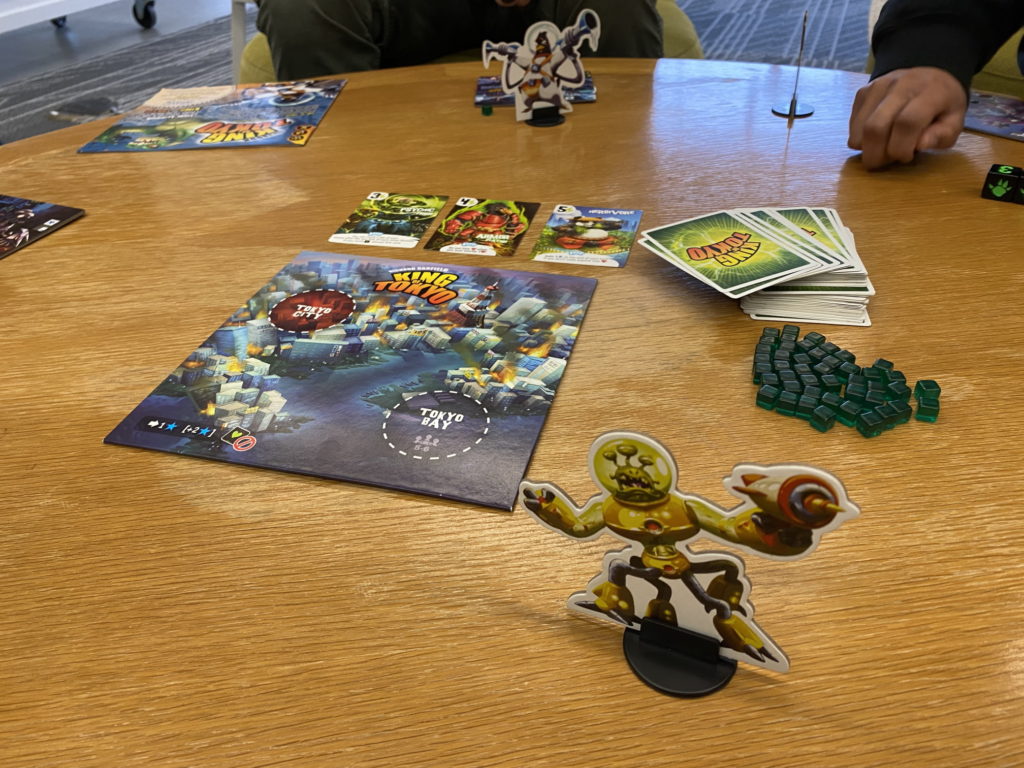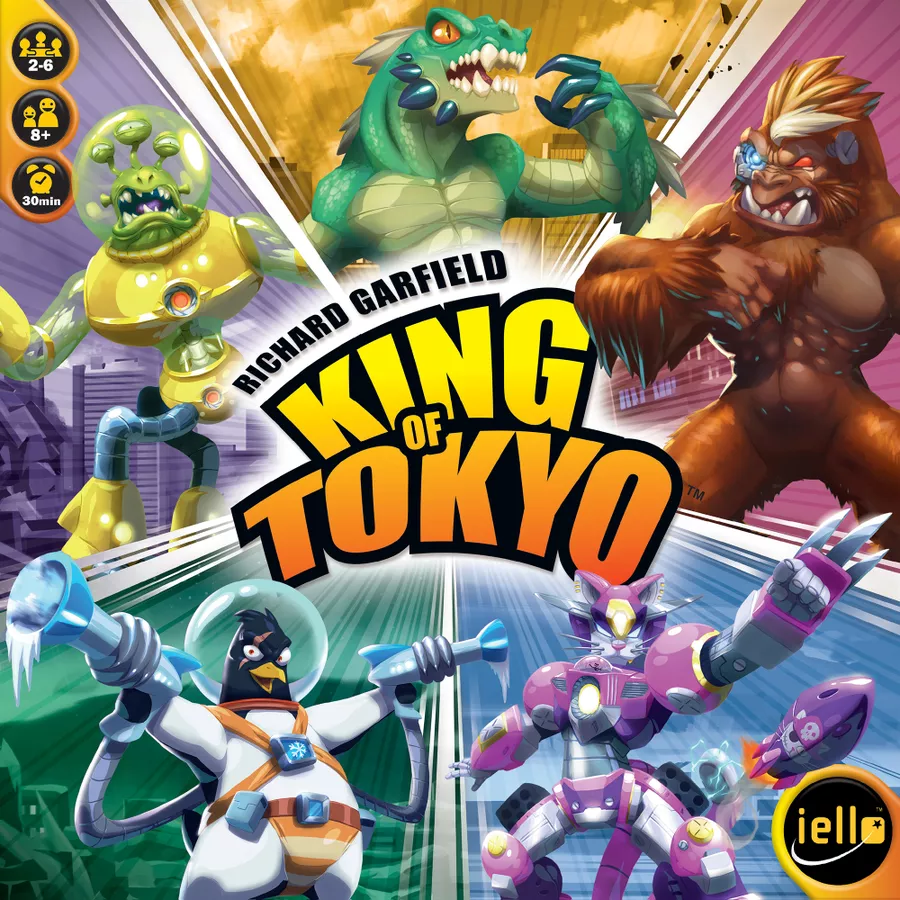King of Tokyo does a good job creating the feeling of its premise—that of a huge monster terrorizing Tokyo. Players that are in Tokyo risk taking damage but in return gain Victory Points and can wreak havoc on every other player in response.
This effect is formed mainly by that damage/attack mechanic—winning a game by defeating every other player’s monster is a very satisfyingly aggressive/violent method of play that feels almost visceral despite the cartoonish art of the game, which matches well with the idea invoked by the game’s name.
However, at the same time, for players who want to win via victory points in a more peaceful manner, when they’re forced to enter Tokyo as a result of the player before them in the turn order leaving Tokyo, it feels punishing for the player, and even if they end up winning like this, they may feel guilty due to being forced into the position, since they cannot leave until they take damage. Helping with this, however, is the generous re-roll mechanic that does also allow for them to avoid defeating others since they can choose to re-do any damage rolls. Even though such a thing feels antithetical to the evoked space of the game, since Victory Points are the other main win condition, it makes sense mechanically for players who exclusively want to pursue that route.

The other main mechanic of the game doesn’t really contribute to the evoked space either—the energy cubes and corresponding cards are an interesting mechanic, but they feel disconnected from the rest of the game both in gamespace and gameplay. In my playthrough of the game, only two or three cards were ever purchased throughout a full game of 5 players, and only one of them was memorable and it was because of a very specific edge-case scenario: the card had the effect of preventing a player from taking damage when the damage is exactly 1, but the player with this card was forced into Tokyo with 2 health—this meant that she could not heal, due to the rule stating that dice roll healing does not apply in Tokyo. As a result, she could not leave Tokyo, since she could only leave upon taking damage, and if she took more than 1 damage she would be defeated. The mechanics of this particular card were very exciting, and in theory the idea of becoming immune to small amounts of damage lends itself to the power fantasy of being the “King of Tokyo”, but the way it was presented along with the energy cubes felt very distant from everything; it was unmemorable enough that I do not recall what was actually depicted on the card.
A solution to this would be to lean more into the monster identity, and make the cards themed around evolutions or gained abilities, such as “Steel Skin” for the card described above. Then, the energy cubes could be replaced with some sort of “evolution point” or equivalent concept where the idea is that players can become stronger through evolving their character. This corresponds better with the gamespace—becoming an incredibly strong, rampaging monster—as well as the gameplay—instead of utilizing an arbitrary and disconnected “energy cube” system, the monster itself is taking time to metamorphosize and gain new abilities. Then, when players choose to take “Evolution Points” on their rolls instead of attacking, healing, or gaining Victory Points, they feel like they’re doing something diegetically rather than only mechanically.
Similarly, Victory Points could be re-portrayed as Destruction Points, to disincentivize a more peaceful gameplay pattern that removes from the immersion of the game. The mechanics of the points would not need to change—it would simply be framed that when Destruction Points are rolled, the monster is destroying things around the country, and that entering and staying in Tokyo causes particularly more destruction because of the size or importance of the city, etc.
Overall, the mechanics of the game have the potential to form a convincing playspace, but it’s held back by some of its theming which undermines its own premise and immersive experience.
